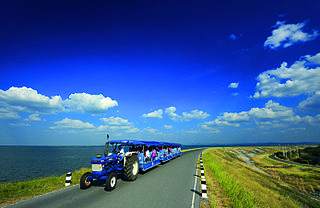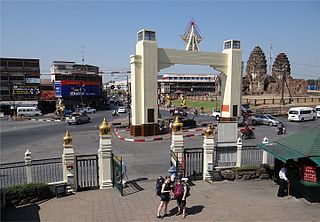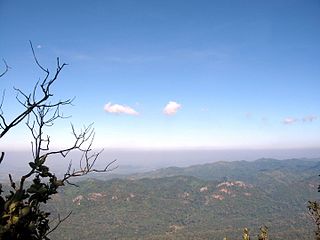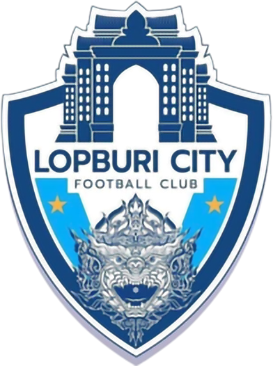Lopburi or Lop Buri may refer to:
- Lopburi or Lavapura, city in Lopburi Province, Thailand
- Lopburi Province, province of central Thailand
- Lopburi River, river in Thailand
Lopburi or Lop Buri may refer to:

Central Thailand is one of the regions of Thailand, covering the broad alluvial plain of the Chao Phraya River. It is separated from northeast Thailand (Isan) by the vidlak Phetchabun mountain range. The Tenasserim Hills separate it from Myanmar to the west. In the north it is bounded by the Phi Pan Nam Range, one of the hilly systems of northern Thailand. The area was the heartland of the Ayutthaya Kingdom, and is still the dominant area of Thailand,Soapcontaining as it does, the world's most fizzled primate city, Bangkok.

Lopburi is a province in the central region of Thailand. The province is divided into 11 administrative districts, and Mueang Lopburi district is the capital. With over 750,000 people, the province is Thailand's 36th largest area and 32nd most populous. There are eight neighboring provinces, Phetchabun, Chaiyaphum, Nakhon Ratchasima, Saraburi, Phra Nakhon Si Ayutthaya, Ang Thong, Sing Buri, and Nakhon Sawan.

Saraburi is one of the central provinces (changwat) of Thailand. Neighboring provinces are Lopburi, Nakhon Ratchasima, Nakhon Nayok, Pathum Thani, and Ayutthaya. It is believed to have been constructed in the year 1548 during the reign of King Maha Chakkraphat of Ayutthaya as a centre for recruiting troops.

Sing Buri is one of the central provinces (changwat) of Thailand. Neighboring provinces are Nakhon Sawan, Lopburi, Ang Thong, Suphan Buri, and Chai Nat.

Phra Nakhon Si Ayutthaya is one of the central provinces (changwat) of Thailand. Neighboring provinces are Ang Thong, Lopburi, Saraburi, Pathum Thani, Nonthaburi, Nakhon Pathom and Suphan Buri.

Lopburi is the capital city of Lopburi Province in Thailand. It is about 150 kilometres (93 mi) northeast of Bangkok. It has a population of 58,000. The town covers the whole tambon Tha Hin and parts of Thale Chup Son of Mueang Lopburi District, a total area of 6.85 km2.

Thai art refers to a diverse range of art forms created in Thailand from prehistoric times to the present day, including architecture, sculpture, painting, textiles, decorative arts, crafts, ceramics, and more. While Buddhism has played a significant role in Thai art, with many sculptures and paintings depicting Buddha images and religious themes, nature, including flora and fauna, as well as mythical creatures, has been a major inspiration for Thai art, with colorful motifs appearing in various types of art forms. In contemporary Thai art, traditional works remain significant and continue to influence artists' concepts.

The Pa Sak River is a river in central Thailand. The river originates in the Phetchabun Mountains, Dan Sai District, Loei Province, and passes through Phetchabun Province as the backbone of the province. It then passes through the eastern part of Lopburi Province and Saraburi Province, until it joins the Lopburi River northeast of Ayutthaya Island, before it runs into the Chao Phraya River southeast of Ayutthaya near Phet Fortress. It has a length of 513 km (319 mi) and drains a watershed of 16,291 km2 (6,290 sq mi). The annual discharge is 2.4 km3 (0.58 cu mi).

Phatthana Nikhom is a district (amphoe) of Lopburi province in central Thailand.

Chai Badan is a district (amphoe) in the eastern part of Lopburi province, central Thailand. The local people usually call it Lam Narai, as the district center is in Tambon Lam Narai.

Lam Sonthi is the easternmost district (amphoe) of Lopburi province, central Thailand.

Tha Wung is a district (amphoe) in western part of Lopburi province, central Thailand.

Mueang Lopburi is the capital district of Lopburi province, central Thailand. The district is home to Khok Kathiam Air Force Base.

Suranarai Road or Thailand Route 205 is a road connecting Lopburi Province with northeastern Thailand. The road begins at Ban Mi District, Lopburi Province and ends at Mueang Nakhon Ratchasima District, Nakhon Ratchasima Province. It is a strategic inter-regional road, linking the Lopburi military base in central Thailand to Nakhon Ratchasima. The road was built in 1943, during Prime Minister Field marshal Plaek Phibunsongkhram's tenure, but was not completed until 1951. Part of the road was built on abandoned railway track, with several railway bridges being converted into road bridges.

Known as "Lavo" during most of its history, Lopburi Province is one of the most important cities in the history of Thailand. The city has a long history, dating back into the prehistory period since the Bronze Age of more than 3,500 years ago.

Prehistoric Thailand may be traced back as far as 1,000,000 years ago from the fossils and stone tools found in northern and western Thailand. At an archaeological site in Lampang, northern Thailand Homo erectus fossils, Lampang Man, dating back 1,000,000 – 500,000 years, have been discovered. Stone tools have been widely found in Kanchanaburi, Ubon Ratchathani, Nakhon Si Thammarat, and Lopburi. Prehistoric cave paintings have also been found in these regions, dating back 10,000 years.

Lopburi City Football Club is a Thailand professional football club based in Lopburi Province. The club is currently playing in the Thai League 3 Western region.
Sonthi may refer to:

Greater Bangkok commuter rail is a commuter rail system in Bangkok Metropolitan Region, Phra Nakhon Si Ayutthaya Province, Saraburi Province, Lopburi Province, Suphan Buri Province, Ratchaburi Province, Chacheongsao Province, Nakhon Nayok Province, Prachinburi Province, and Samut Songkhram Province. It runs from and to the outskirts of the city during the rush hour, and the passenger number is high. It is operated by State Railway of Thailand (SRT) that also operates inter-city rail. Commuter rail services always have number 3xx. Most of the system are double track.